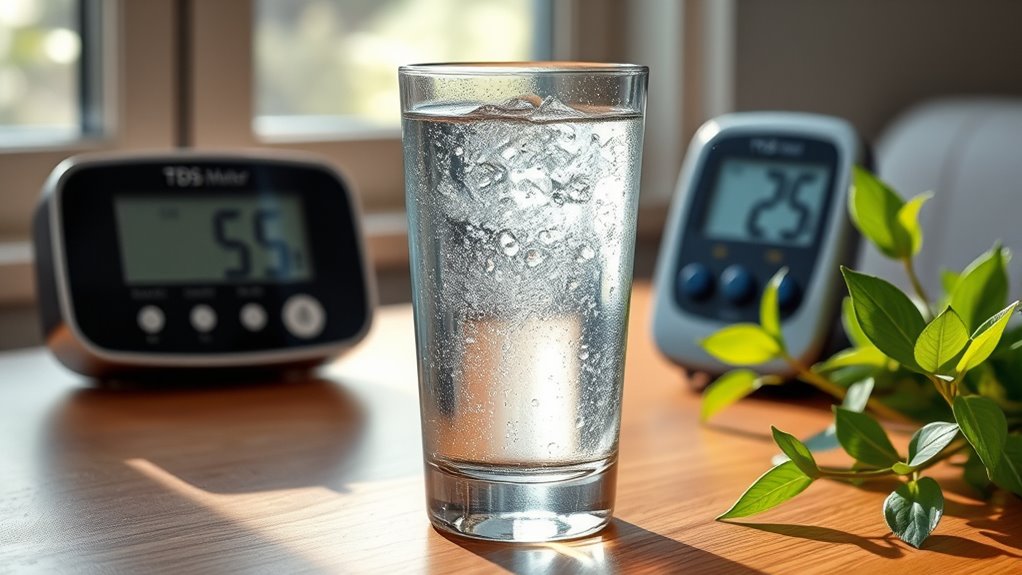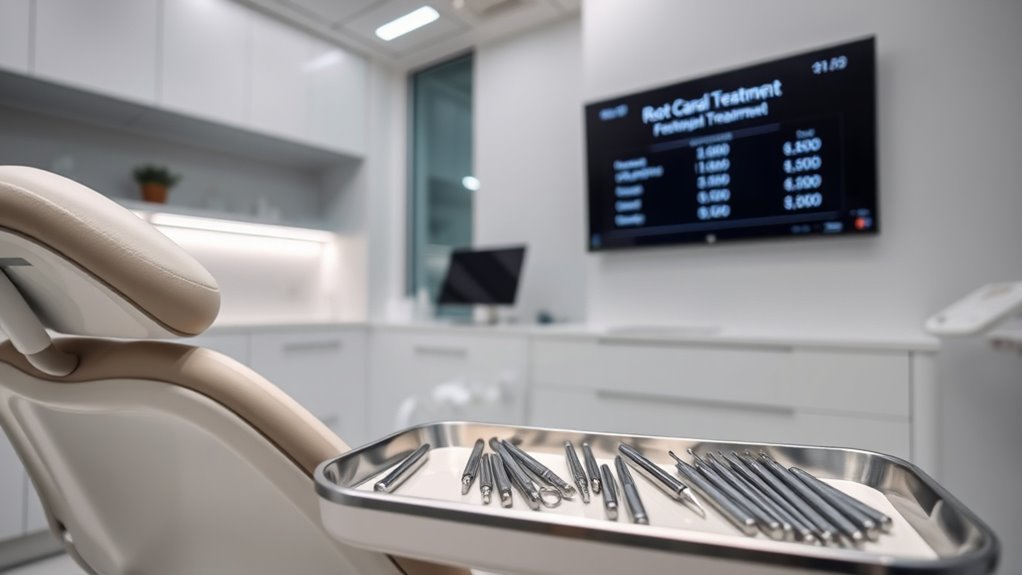If your tooth filling hurts months after the procedure, you’re not alone. Many experience lingering discomfort that can stem from various issues. It might be nerve sensitivity or even a misalignment in your bite. Sometimes, hidden decay or an allergic reaction to the materials used can be the culprits. Understanding the root cause is essential for relief, so let’s explore what might be happening with your filling.
Key Takeaways
- Nerve irritation or damage may occur if the filling is close to the tooth’s nerve or if the application technique was flawed.
- Hidden decay beneath the filling can develop, leading to sensitivity and pain if oral hygiene is inadequate.
- Bite misalignment from the filling can create uneven pressure, resulting in discomfort while chewing and potential jaw pain.
- Allergic reactions to the filling materials may cause prolonged sensitivity or discomfort, necessitating evaluation by a dentist.
- Temperature sensitivity can indicate inflammation or irritation within the tooth structure, prompting a need for dental assessment.
Understanding Tooth Fillings and Their Purpose
When you have a cavity, getting a tooth filling is essential for restoring your tooth’s health and function. Fillings help prevent further decay and protect your tooth from bacteria. There are various filling types, including amalgam, composite, and ceramic. Each type has its benefits, so discussing your options with your dentist is vital. Amalgam fillings are durable and cost-effective, while composite fillings blend seamlessly with your natural teeth. Prioritizing dental care means addressing cavities promptly, ensuring you maintain your overall oral health. After treatment, follow your dentist’s instructions for aftercare, which might include avoiding certain foods for a while. This way, you’ll help your filling last and keep your smile bright and healthy for years to come.
Common Causes of Pain After Getting a Filling
After getting a filling, you might experience unexpected pain due to tooth sensitivity or issues with the filling material itself. These problems can arise for various reasons, and it’s important to understand what might be causing your discomfort. Let’s explore these common causes to help you find relief.
Tooth Sensitivity Issues
Have you ever noticed increased sensitivity in your teeth following a filling? This discomfort can often stem from various factors. One common issue is toothpaste sensitivity; if you’ve switched to a new brand or a whitening formula, the ingredients may irritate your teeth. Additionally, if you’re not maintaining good oral hygiene, plaque buildup can lead to heightened sensitivity around the filling. It’s essential to brush and floss regularly to minimize this risk. Your teeth might also react to temperature changes when consuming hot or cold foods and drinks. If the sensitivity persists, it’s best to consult your dentist to determine the exact cause and explore potential solutions, ensuring your dental health remains a priority.
Filling Material Problems
While many people find relief from dental pain after getting a filling, some may experience discomfort due to issues with the filling material itself. If the material isn’t compatible with your tooth structure or surrounding tissues, it can lead to inflammation and pain. Additionally, certain materials may not offer the necessary filling longevity, resulting in wear and tear that exacerbates discomfort. For instance, if a composite filling shrinks after placement, it can create gaps where bacteria can enter, causing further issues. If you’re experiencing persistent pain, it’s crucial to consult your dentist. They can assess whether the filling material is causing the problem and recommend the best course of action to restore your comfort and oral health.
Sensitivity to Temperature Changes
After getting a filling, you might notice increased sensitivity to hot or cold temperatures. This can stem from nerve irritation, reactions to the filling material, or changes in the tooth structure. Understanding these factors can help you manage your discomfort more effectively.
Possible Nerve Irritation
When you experience sensitivity to temperature changes after getting a tooth filling, it could indicate possible nerve irritation. This discomfort often stems from nerve inflammation affecting the dental pulp, which houses the nerves and blood vessels of your tooth. If the filling is too close to the nerve, temperature fluctuations can provoke pain, as the nerve endings react to the extremes. You might notice this sensitivity when consuming hot or cold foods and drinks. It’s important to pay attention to these signals, as they can suggest that the nerve is struggling to cope with the irritation. If this sensitivity persists, it’s a good idea to consult your dentist for a thorough evaluation and appropriate treatment options.
Filling Material Reactions
Nerve irritation can lead to sensitivity, but the type of filling material used in your tooth can also play a significant role in how you experience temperature changes. Different filling materials, like composite resins, amalgams, or glass ionomers, react uniquely to heat and cold. These materials may undergo chemical reactions that can expand or contract, causing discomfort when exposed to temperature fluctuations. If you notice increased sensitivity after eating hot or cold foods, it might be due to the specific filling material used. Additionally, some materials can retain heat or cold longer, exacerbating your discomfort. If this sensitivity persists, it’s a good idea to consult your dentist to evaluate the filling and explore possible solutions.
Tooth Structure Changes
Although your filling material plays a role, changes in the tooth structure itself can greatly contribute to sensitivity to temperature changes. Over time, your tooth anatomy can undergo structural changes due to factors like decay, wear, or trauma. These alterations can expose the dentin, which is sensitive to hot and cold. When the protective enamel is compromised, temperature fluctuations can cause discomfort. Additionally, a cracked or fractured tooth can create pressure points that amplify sensitivity. If you notice heightened pain when consuming hot or cold substances, it is crucial to consult your dentist. They can assess your tooth’s condition and recommend appropriate treatments to alleviate your discomfort and restore your tooth’s integrity.
Possible Issues With the Filling Material
While dental fillings are designed to restore your teeth, issues can arise from the filling material itself. You might experience pain if the material isn’t compatible with your tooth structure or surrounding tissues. For instance, some materials can cause an allergic reaction or sensitivity, leading to discomfort months after placement. Additionally, the longevity of the filling can be affected by factors like wear and tear or the material’s ability to withstand pressure from chewing. If you notice persistent pain, it’s crucial to consult your dentist. They can evaluate whether the filling material is contributing to your discomfort and determine if a replacement or adjustment is necessary to maintain your dental health and comfort.
Tooth Decay Beneath the Filling
Even with a filling, tooth decay can still develop beneath it, often without you noticing. This hidden decay can weaken the filling material and increase the risk of gum infections. It’s essential to keep an eye on any changes in your tooth to avoid complications.
Hidden Decay Development
Hidden decay development, often lurking beneath your dental fillings, can lead to unexpected pain and complications. Even after months, hidden cavities can form as plaque and bacteria accumulate around the filling margins. Progression factors like poor oral hygiene, frequent sugar consumption, and inadequate dental care can exacerbate this issue. You might not notice anything until the pain surfaces, indicating that decay has advanced considerably. Regular dental check-ups are essential, as they allow your dentist to spot these hidden issues early, preventing further damage. If you’re experiencing discomfort, don’t wait for it to worsen. Addressing potential hidden decay promptly can save your tooth and keep your smile healthy. Stay proactive about your oral care to avoid these surprises!
Filling Material Breakdown
When dental fillings start to break down, it can create a perfect environment for tooth decay to develop underneath. This breakdown often occurs due to the material durability of the filling. Over time, factors like wear and tear, temperature changes, and exposure to acidic foods can weaken the filling’s integrity. As the filling deteriorates, gaps may form, allowing bacteria to seep in and cause decay below the surface. Unfortunately, this hidden decay can go unnoticed until it becomes painful or leads to more serious issues. To maintain filling longevity, it is crucial to have regular dental check-ups. Your dentist can monitor the condition of your fillings and recommend replacements if necessary, preventing further complications down the line.
Gum Infection Risk
As fillings break down and gaps form, the risk of tooth decay increases, which can lead to gum infections. When decay develops beneath a filling, bacteria can thrive, causing inflammation and pain. If you notice discomfort, it’s essential to address it promptly. Neglecting your oral hygiene can worsen the situation, allowing infection to spread. Regular brushing and flossing can help keep bacteria at bay, but if you’re experiencing pain, you should consult your dentist. They’ll check for decay under the filling and may recommend a replacement or further treatment. Remember, staying on top of your oral hygiene is your best defense against tooth decay and gum infections. Don’t wait for pain to become unbearable; take action now!
Nerve Damage or Irritation
Nerve damage or irritation can often be an unexpected consequence of getting a tooth filling. If you’re experiencing pain months later, it might be due to nerve sensitivity caused by dental trauma during the procedure. Here are a few things to take into account:
- Proximity to Nerves: Fillings placed close to the nerve can lead to irritation, causing ongoing discomfort.
- Inflammation: Any inflammation in the area may heighten nerve sensitivity, making your tooth feel sore.
- Improper Technique: If the filling was applied incorrectly, it could lead to nerve-related issues that manifest over time.
If you suspect nerve damage or irritation, consult your dentist to explore the best treatment options. Addressing these concerns promptly can help alleviate your pain and restore your comfort.
Bite Misalignment and Its Effects
Bite misalignment can lead to various discomforts after getting a tooth filling, especially if the filling alters your natural bite. When your dental occlusion isn’t properly aligned, you might feel pressure or pain when chewing. This misalignment can result from inadequate bite adjustments during your dental visit, leaving you with an uneven bite. Over time, this discomfort can worsen, affecting your overall oral health. You may also experience jaw pain or headaches as your body compensates for the misalignment. If you suspect that your filling is causing these issues, it’s essential to consult your dentist. They can evaluate your bite and make necessary adjustments to restore comfort and proper function. Don’t ignore these signs; addressing them early can prevent further complications.
Allergic Reactions to Filling Materials
Allergic reactions to filling materials can occur in some individuals, leading to uncomfortable symptoms that may arise shortly after treatment. If you experience any of the following allergic symptoms, it’s essential to consult your dentist:
Allergic reactions to dental fillings can lead to discomfort; consult your dentist if you notice any symptoms.
- Itching or swelling around the filling area
- Redness or rash on your gums or surrounding skin
- Increased sensitivity to hot or cold temperatures
These reactions can result from specific components in the filling materials, such as metals or resins. If you’re suspecting an allergy, your dentist may recommend alternative filling materials that are less likely to trigger these responses. Addressing allergic symptoms early can help you avoid prolonged discomfort and guarantee your dental health remains a priority.
The Role of Gum Disease in Post-Filling Discomfort
While tooth fillings are designed to relieve pain and restore function, underlying gum disease can complicate recovery and lead to discomfort after treatment. If you notice gum disease symptoms like swelling, bleeding, or persistent pain, it is vital to address these issues. Gum disease can affect your periodontal health, making it harder for your gums to heal properly after a filling. The inflammation in your gums may create additional pressure around the filled tooth, causing lingering discomfort. Additionally, if the gum tissue recedes due to gum disease, it can expose sensitive areas of the tooth, intensifying the pain. Maintaining good oral hygiene and monitoring your gum health is important to prevent these complications after your filling.
When to Seek Professional Dental Help
How can you tell if your tooth filling is causing more than just temporary discomfort? It’s vital to be aware of persistent issues that require professional dental help. If you experience any of the following, don’t hesitate to seek a dental follow-up:
Be vigilant for signs of persistent discomfort after a tooth filling; professional help may be necessary.
- Intense pain: If the pain worsens or becomes sharp, it could indicate a problem with the filling or underlying tooth.
- Swelling or redness: Signs of infection or inflammation around the filling area can’t be ignored.
- Sensitivity to temperature: Prolonged sensitivity to hot or cold can signify that your filling needs attention.
For effective pain management, addressing these symptoms early on is important. Don’t wait for the discomfort to escalate—schedule an appointment with your dentist.




